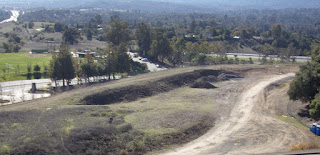 Starting from the 2017 fall semester, employees at the
College of San Mateo, Cañada College, and Skyline College will have the option
of helping their offices become certified under the Green Office Program.
Starting from the 2017 fall semester, employees at the
College of San Mateo, Cañada College, and Skyline College will have the option
of helping their offices become certified under the Green Office Program.
The Green Office Program is a District-wide voluntary
certification program that incentivizes sustainable practices in campus
offices. Offices that achieve certain goals in a variety of areas such as
energy savings, waste diversion, and water conservation can get certified as a
Green Office.
The program was piloted on all three campuses in the 2017
spring semester. At the College of San Mateo, the Business Office and
Math/Science Division participated as pilot offices. Staff in the Business
Office have recently been trying to implement paperless initiatives in their
operations and decrease the amount of money and resources spent on printing. As
a part of the Green Office Program, the Business Office scanned and saved paper
forms electronically to facilitate future electronic processes. Staff members
also gathered and analyzed data on printing trends so that deans can better
understand and manage paper use in their divisions.
The Math/Science Division at CSM piloted Green Office efforts in safe e-waste disposal by conducting a spring e-waste clean-out. For a week in the spring, faculty members were able to drop off their old VHS tapes, DVDs, and CDs, which were picked up by an e-waste upcycling company. The division had a positive impact by decreasing their contribution to toxic emissions due to disposal of e-waste into landfills.
 The Enrollment Services Office and the Facilities
Maintenance Center at Skyline College also participated in the Green Office
Program as pilot offices. Enrollment Services has been striving to centralize
printers in order to promote cost savings and sustainable practices. The Green
Office Program Associate is working with the office to provide recommendations
for greatly decreasing the amount of printers used while maintaining efficiency
within the office.
The Enrollment Services Office and the Facilities
Maintenance Center at Skyline College also participated in the Green Office
Program as pilot offices. Enrollment Services has been striving to centralize
printers in order to promote cost savings and sustainable practices. The Green
Office Program Associate is working with the office to provide recommendations
for greatly decreasing the amount of printers used while maintaining efficiency
within the office.
The Facilities Maintenance Center has utilized
energy-saving practices such as decreasing the number of printers in the office
and utilizing daylighting in lieu of artificial lighting when appropriate. The
FMC is on track to be certified as the first pilot office.
A student at Cañada College conducted computer audits in
the Learning Center and Library at Cañada College to measure the energy used
for computers in different modes, such as sleep mode and turned on. She also
monitored the number of students in both locations at different times of the
day and week to track times of peak appliance use and minimal appliance use.
Using the data gathered, she provided recommendations for better managing the
Learning Center and Library computers to provide energy savings while still
providing adequate resources for students.
Thanks to the efforts of the pilot offices to make changes
in their offices and persevere through some trial and error, the Green Office
Program has been developed and is scheduled to roll out in the Fall 2017
semester.















